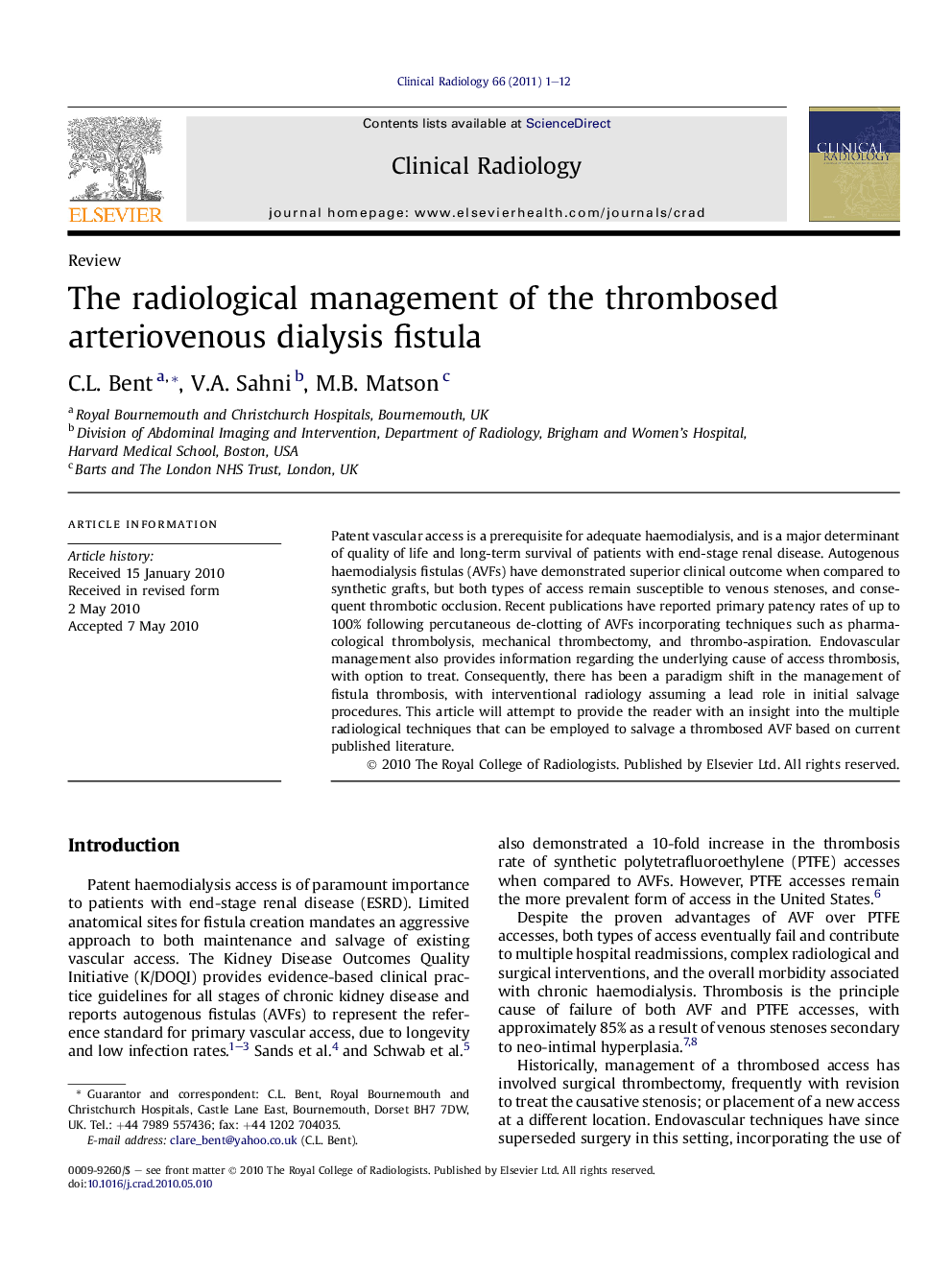| Article ID | Journal | Published Year | Pages | File Type |
|---|---|---|---|---|
| 3983289 | Clinical Radiology | 2011 | 12 Pages |
Patent vascular access is a prerequisite for adequate haemodialysis, and is a major determinant of quality of life and long-term survival of patients with end-stage renal disease. Autogenous haemodialysis fistulas (AVFs) have demonstrated superior clinical outcome when compared to synthetic grafts, but both types of access remain susceptible to venous stenoses, and consequent thrombotic occlusion. Recent publications have reported primary patency rates of up to 100% following percutaneous de-clotting of AVFs incorporating techniques such as pharmacological thrombolysis, mechanical thrombectomy, and thrombo-aspiration. Endovascular management also provides information regarding the underlying cause of access thrombosis, with option to treat. Consequently, there has been a paradigm shift in the management of fistula thrombosis, with interventional radiology assuming a lead role in initial salvage procedures. This article will attempt to provide the reader with an insight into the multiple radiological techniques that can be employed to salvage a thrombosed AVF based on current published literature.
